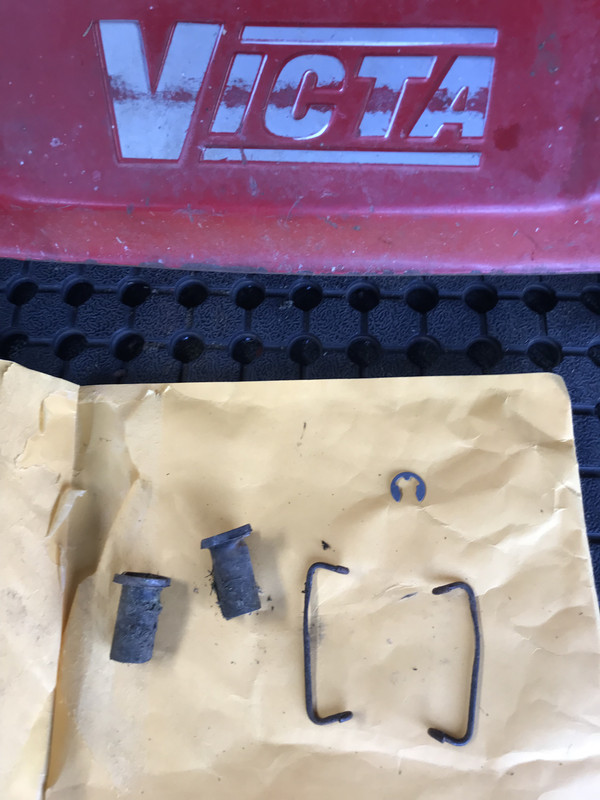Quote:
Originally Posted by Trendseeker

Just out of curiosity, how much more robust are these commercial mowers compared to a decent domestic mower like the Mustang? Is there a rough estimate on how much longer they last than a domestic mower put through the same amount of work?
My Victa Mustang is about 16 years old but I only use it once a fortnight on my lawns(sometimes weekly on the backyard in summer), but lately Iíve been mowing my parentís lawn as well so itís getting twice the workout now.
|
A very good question, and one that varies depending on the brands/models in question.
Speaking about the Victa Mustang vs Victa Commercial, depending on the engine, a Mustang usually has the higher spec engines. A 16-year-old Mustang would have had either the cast-iron 2-stroke or the Briggs 190cc 6hp Quantum, which were no different to the commercial grade engines. Some were fitted with the Honda GC160, which doesn't have an iron bore. A modern Mustang on the other hand uses the Briggs 850 Commercial engine with a cast iron bore, but some have the domestic 163cc alloy bore Briggs or the terrible Victa V170 non-commercial engines.
From there, a current model Mustang won't have the steel wear plates on the deck, the fabric catcher, stiffer handle bar and mounting points, or the higher-grade wheels. A self-propelled model will have a less robust gearbox too, verified by separate part numbers. Apart from that, the Mustang and Commercial 19-inch share the same basic chassis.
Speaking more generally, commercial grade mowers typically strengthen and upgrade the key failure and points.
One such example being the axle mountings. Most domestic mowers have axles supported by plastic bushings and held in place with tension clips, which have a habit of popping off with heavy usage. A commercial mower such as my Rover, Bushranger or alloy-based Victa's (Mustang, Commercial 19 or 21, Mulchmaster) have the axles bolted to the chassis.
Domestic steel base Victa -


Bushranger 21-inch alloy base -

Rover 22-inch alloy base -

In terms of wheels, a commercial mower will often have larger/equal size wheels, some cheaper mowers use smaller front wheels. Having larger front wheels helps keep the front "planted" and less likely to lift off the grass and cause sloppy cutting. The wheel itself will be higher quality construction, or even made from steel on the Bushranger's. They also have double ball bearing inserts instead of single.
Older Rover with smaller front, larger rear wheels -

Mustang with equal size front and rear, domestic wheels -

Victa Commercial wheels -

Bushranger cast steel wheels -

For self-propelled mowers, the domestic mowers are usually single speed units. Commercial mowers are often multi-speed gearboxes, sometimes driven by a drive shaft (Honda's, Bushranger) instead of a belt (Victa's, Masport's, Rover). The gearboxes are usually higher quality "commercial grade" units.


For some reason, commercial mowers are supplied with fabric catchers instead of plastic, this is apparently for superior airflow. They also hold a greater volume of clippings. The catcher flap is often steel instead of plastic.
In addition to the bolted axles, commercial mowers have stiffer handlebars with superior/stronger mounting points. The height selector lever is usually strengthened, and the decks are often fitted with wear plates to limit damage to the alloy deck over time.
My poor old Rover with no wear plates, the deck has been scalloped over the last ten years of use...................

The wear plates are replaceable, which the ones on my Mulchmaster probably due for replacement..............

As you can see, the plates bolt to the chassis................

Engines, on commercial models you get a cast-iron cylinder for increased life. An alloy bore engine will start smoking waaaay before an iron bore engine will. Honda GXV-160 OHV and GSV190 OHC, Briggs DOV and 850-series, some Krohler's (XT775, XT8) and some Loncin (196cc) engines come with a cast iron bore. Except I/C Quantum's, all other Briggs engines have an alloy bore, be that side valve or OHV engines. Honda GC160/170 OHC engines have an alloy bore.
Some models are also fitted with a blade brake clutch, which acts like a ride-on mower in deactivating drive to the blades, which is handy to when using the mower all day long. The Bushranger fitted with the Loncin engine, most commercial grade Honda's, and the very last Rover ProCut's came with these.
Long story short, the Mustang is a bit of hybrid in that you get a some of the commercial grade stuff like the engine (850-series), axle mountings and alloy chassis, combined with more cost-conscious components to keep the price down.